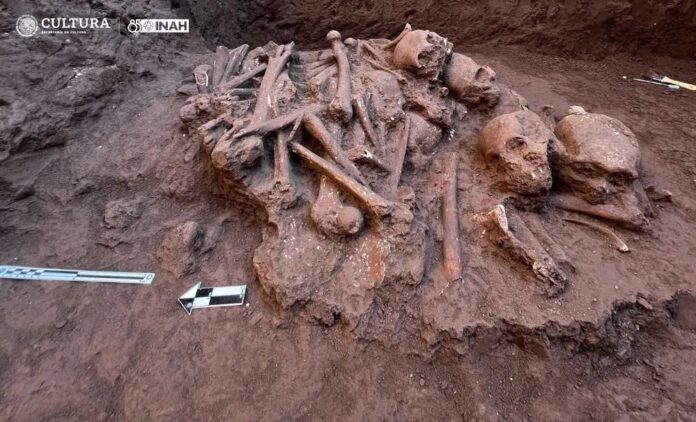The INAH specified that this finding occurred in the town of Pozo de Ibarra, where a sewer network construction work is being carried out
A burial from the pre-Hispanic era, which sheds light on unique funerary practices and how they were carried out in the region, was discovered in the state of Nayarit by personnel from the National Institute of Anthropology and History (INAH), a dependency of the Ministry of Culture of the Government.
In a statement, the INAH specified that this finding occurred in the town of Pozo de Ibarra, where a sewer network construction work is being carried out.
According to the archaeologist in charge of the salvage work, Claudia Servín, “it is a funerary system composed of a primary burial, that is, the skeleton maintains the anatomical relationship, accompanied by a concentration of human bone remains deposited without anatomical relationship, which have a particular arrangement”.
In addition, she said, “it was identified that the long bones, such as femurs, tibias, radii and cubits, were carefully placed in a specific sector. Similarly, the skulls were intentionally grouped, some, even, stacked one on top of another, in another sector of the ossuary”.
In the note, the INAH explained that the controlled explorations “allow to recognize that the burial is part of a complex funerary system, since the disposition of the bone remains was made in a single moment, when the bones were already skeletonized”.
In addition, it indicated that this method of disposition “suggests the existence of specific ceremonial practices, associated with death in the pre-Hispanic era in the region”.
The finding, pointed out the INAH, possibly, is related to the Amapa cultural phase (500-800/850 AD), because ceramic vessels and anthropomorphic figurines of that temporality were also recovered.
It was also exposed that during the field analysis, at least seven complete skulls were recorded, presumably belonging to male individuals of different ages, some of which show evidence of cranial modification, a cultural practice identified as part of the social dynamics related to the Mesoamerican cultures, which involved alterations in the shape of the skull for aesthetic purposes and, possibly, as a form of social distinction.
The authorities of the INAH indicated that the archaeological finding “is exceptional, since there are no precedents of this type of burials in other nearby sites”, and enriches the understanding of the funerary practices in the region.
In addition, they explained that, as part of the interpretations of the meaning of this finding, it is proposed that perhaps “it was part of the funerary rites that were carried out in the domestic units of the region, which could have been based on the burial of the male members of the same family as part of a ritual to celebrate the foundation of a settlement”.
Source: Lopez Doriga






